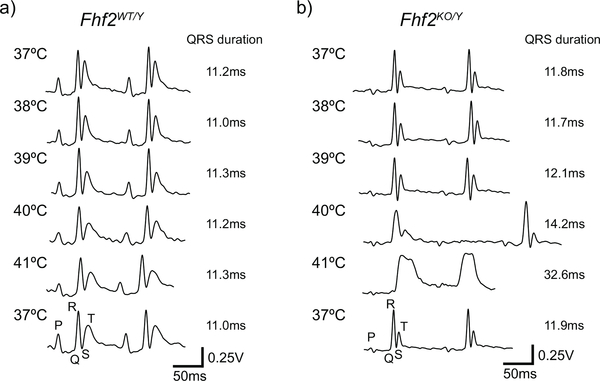Fig. 1.
Representative ECG traces from Fhf2WT/Y and Fhf2KO/Y mice at a series of body temperatures. (a) Fhf2WT/Y and (b) Fhf2KO/Y ECGs were similar at 37°C. However, conduction intervals were markedly prolonged in Fhf2KO/Y mice at elevated temperatures (≥40°C). High degree AV block and coved-type ST elevations were noted in Fhf2KO/Y above 40°C. Fhf2WT/Y mice did not have altered ECG parameters at any body temperature (37–41°C). Heart rates were similar between the Fhf2WT/Y and Fhf2KO/Y mice.

